
Dissecting long-held standards of proportion and their relevance today
If one is observant, there are moments when our experience of a building or a space feels like stepping into a house of mirrors. You can blame the carnivalesque walk-through on a failure in proportion.
In the course of history, proportion, the balance of two ratios with ratio being the comparison of two units, has made structures gratifying to behold. Canons of proportion, rooted in mathematics, have aided architects in designing harmonious spaces. We are driven by the conviction that a building feels right if the sizes of its parts are appropriately related to its entire dimension.

The human body is the primary reference for concluding whether a space is scaled appropriately or out of scale, as well as the diagram for proportional composition. The effect of a space—grandeur, humility, comfort, and the like—depends on the correlation between the structure and our body. As users appreciate human-scaled spaces, designers are tasked to sustain sensory consistency by being responsive to the human figure.
The Golden Ratio
Ideal proportion is guided by mathematics. Perhaps the most influential among these theories is the Golden Ratio. Dubbed as the law of beautiful proportions, this system governs the relationship of smaller parts to the whole. This is defined as the ratio between two divisions of a line (or two dimensions of a plane figure): the ratio of the lesser of the two to the greater is balanced with the ratio of the greater to the sum of both. In numbers, the golden ratio is referred to as Phi (Φ) or 1.618.

The ancient civilizations quantified beauty in terms of proportion, making this number evident in the Pyramids of Giza in Egypt, where the ratio of its base and height is roughly close to Phi, and the Parthenon in Greece, where Phi is applied on its façade and sculptures. In modern design, the Panton chair, the Chanel purse, and Rem Koolhaas’ CCTV Building in China fall within this system of proportion. The Meralco building in Ortigas also falls approximately within the diagram.
The Golden Ratio is now more ubiquitous than we realize. The rule of thirds, a simplification of the Golden Ratio, is used by almost everyone on social media through the 3×3 grid on Instagram’s interface. And with our photo-driven digital lifestyles, it will be maximized more than ever.
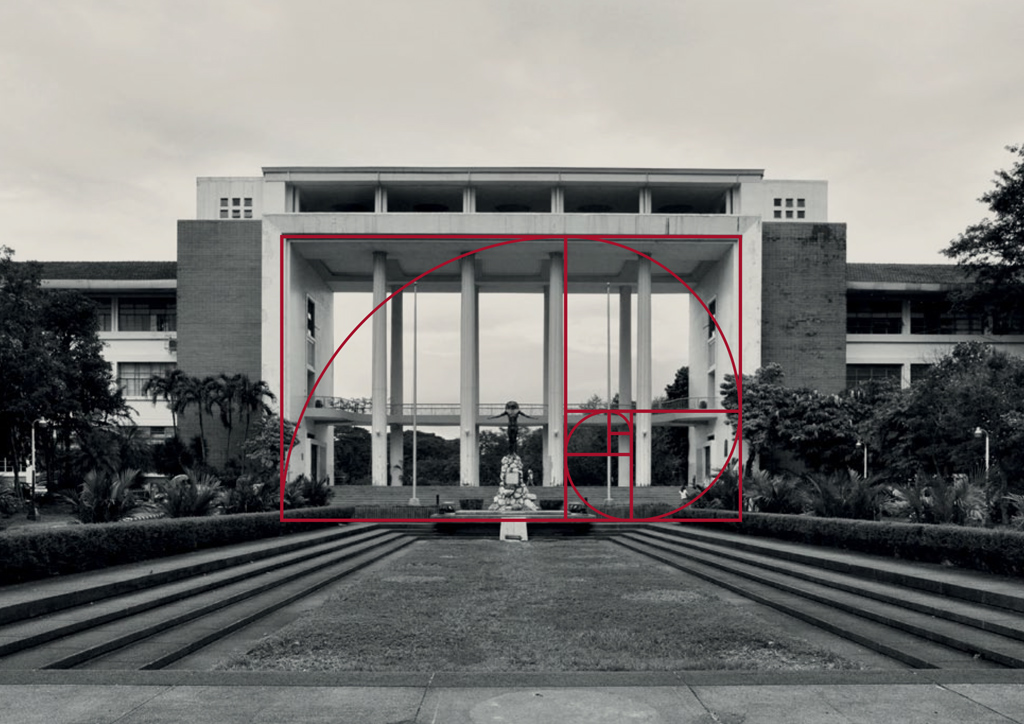
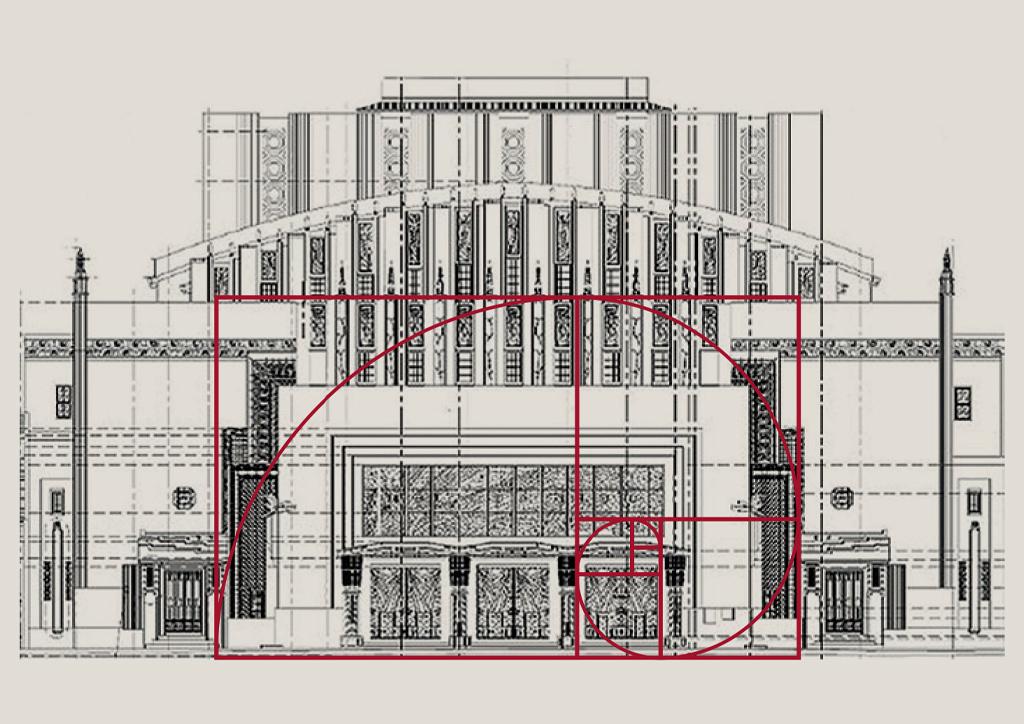
READ MORE: Escolta Maestros: 6 Filipino architects who shaped the old CBD
The Vitruvian Man
According to 1st-century author, architect, and engineer Marcus Vitruvius Pollio, an architect must prioritize firmitas (strength), utilitas (functionality), and venustas (beauty) when designing a building. Venustas indicates that beauty could be learned from the truth of nature, and that nature’s designs were based on universal laws of proportion and symmetry. Therefore, proportions of the human body can be used as a model of proportional perfection. This led Leonardo da Vinci to sketch the Vitruvian Man, a graphical representation of proportions of the human face and body. Since beauty was measured to a tee, ugliness was easy to identify. Basically, deviations from the ideal were deemed ugly. It was easy to tell when something was off and total distortions evoked laughter, hinting at why we are so humored by our Snapchat filters.
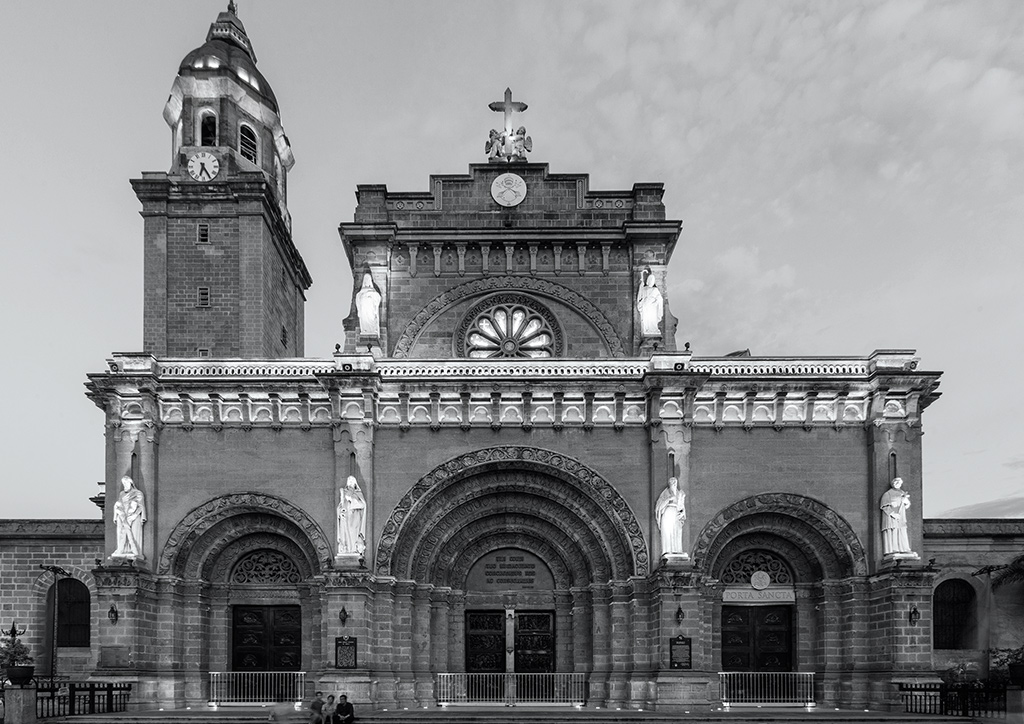
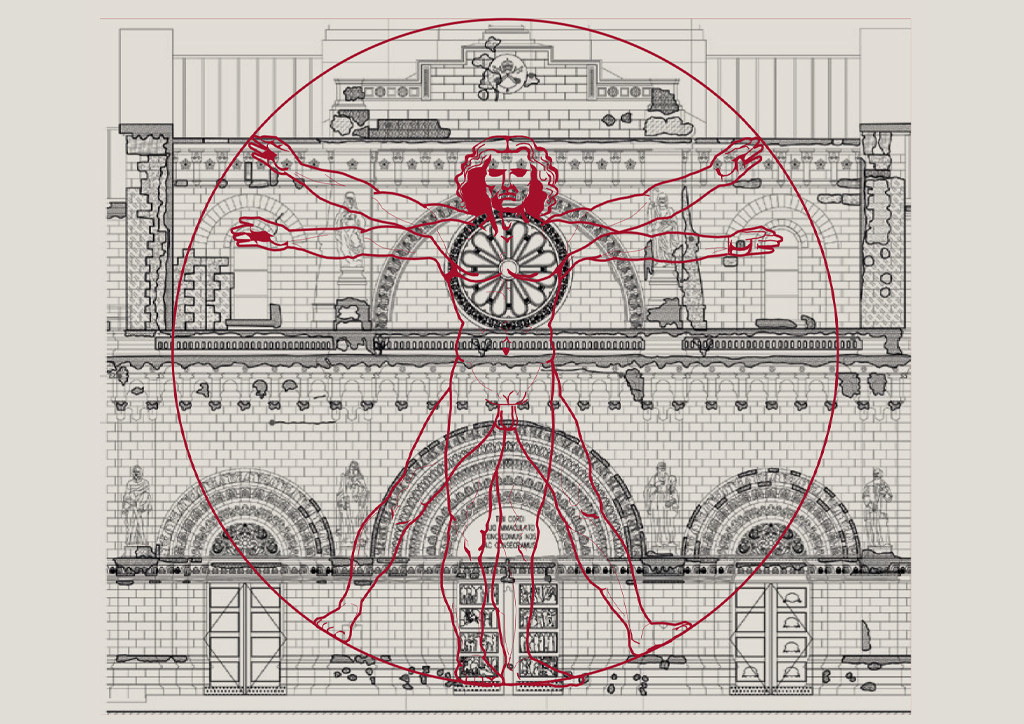
Vitruvius’ ideal human body fits precisely into a circle and a square. He believed this link existed between perfect geometric forms and the perfect body. In order to create eurythmia, a graceful and agreeable atmosphere, the building must reflect these natural laws of harmony and beauty.
Vitruvius discussed his principles in relation to building temples. Since the proportions and measurements of the human body are believed to be divinely created, the temple should reflect and relate to the parts of the human body. Plans of early church design greatly exemplified this. It is also present in Renaissance paintings such as Boticelli’s The Annunciation and Michaelangelo’s The Creation of Adam, and da Vinci’s The Last Supper.
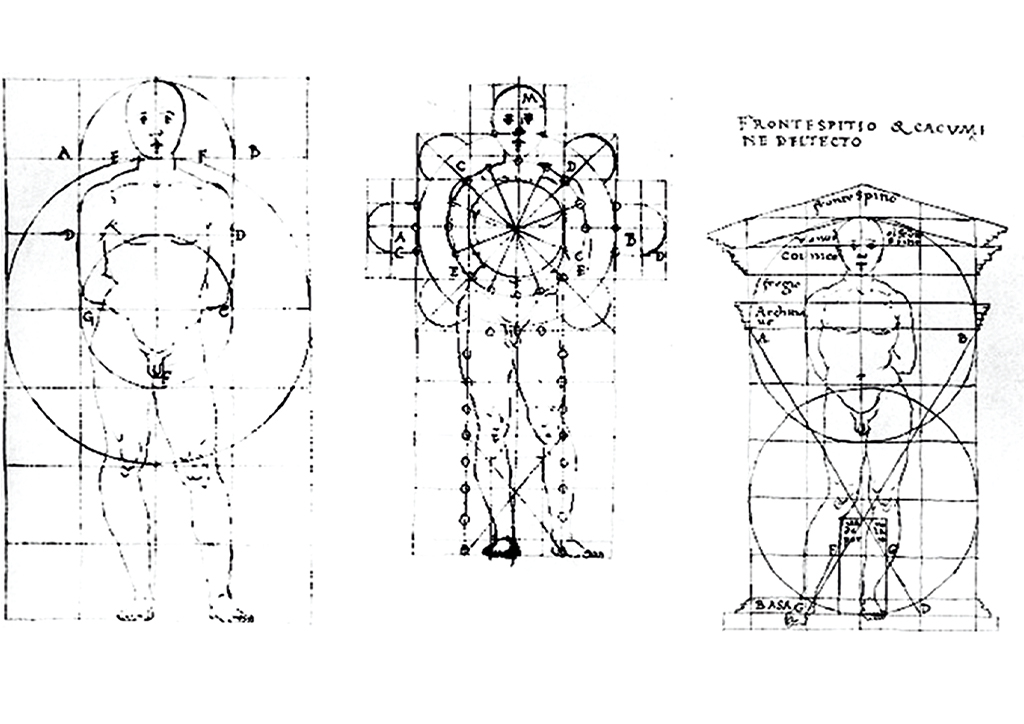
YOU MIGHT LIKE: A Fitting Retrofit: The Restoration of Manila Cathedral
The Modulor System
Modern visionaries also studied the principles of proportion. Swiss-French architect Le Corbusier introduced the Modulor system, an anthropometric scale of proportions based on the height of an English man (183 cm) with his arm raised. This is basically a fusion of module and the golden ratio, founded on mathematics and proportions of the human body. The basic grid consists of three measures: 113, 70, and 43 centimeters. He viewed this as a system of measurements that could govern lengths, surfaces, and volumes in order to “maintain the human scale everywhere.”
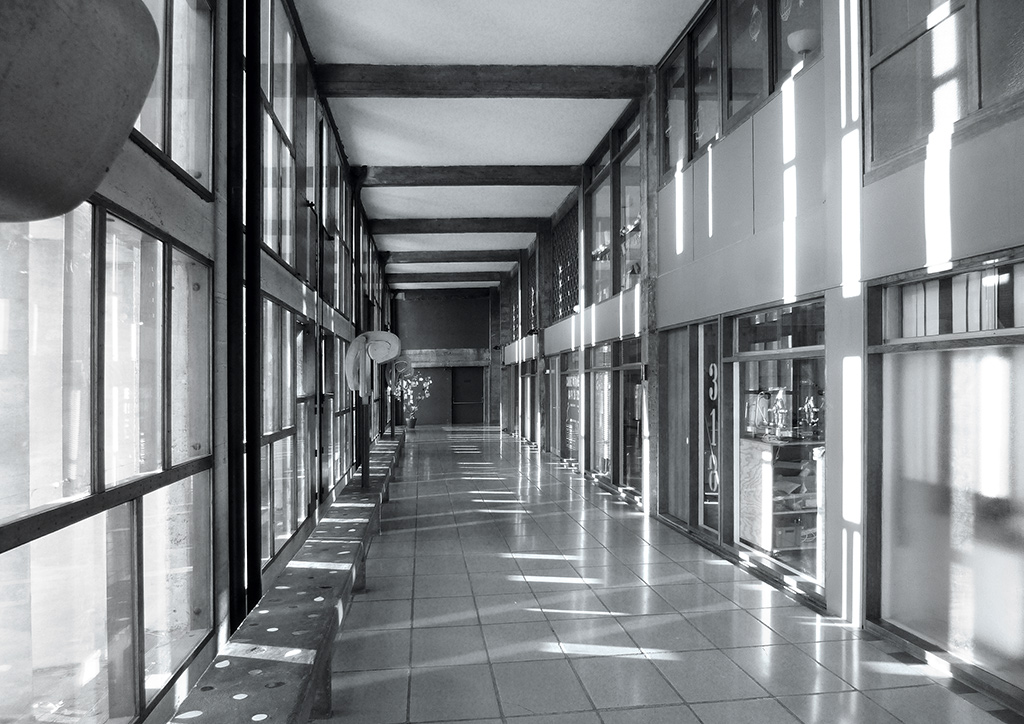
Built in 1952, the Unite d’Habitation by Le Corbusier in France was the first project where Modular system is implemented. Designed as a prototype for other urban housing projects, this residential building has a standard module height of 2.26 meters and was intentionally “made for the human scale.” The system is evident on the proportioned plan, section, and elevations of the building particularly openings, corridor width, story height, and bay distances. The sun-shading device brise-soleil and furniture units were also designed according to human movement.
Although it does not explicitly mention the influence of the Modular, the National Building Code of the Philippines accommodates the human scale Le Corbusier proposed. The minimum ceiling height for a habitable room is 2.4 meters. In an artificially ventilated building, the typical headroom clearance from the 3rd story upwards is 2.1 meters.
[one_third padding=”0 10px 10px 0″]
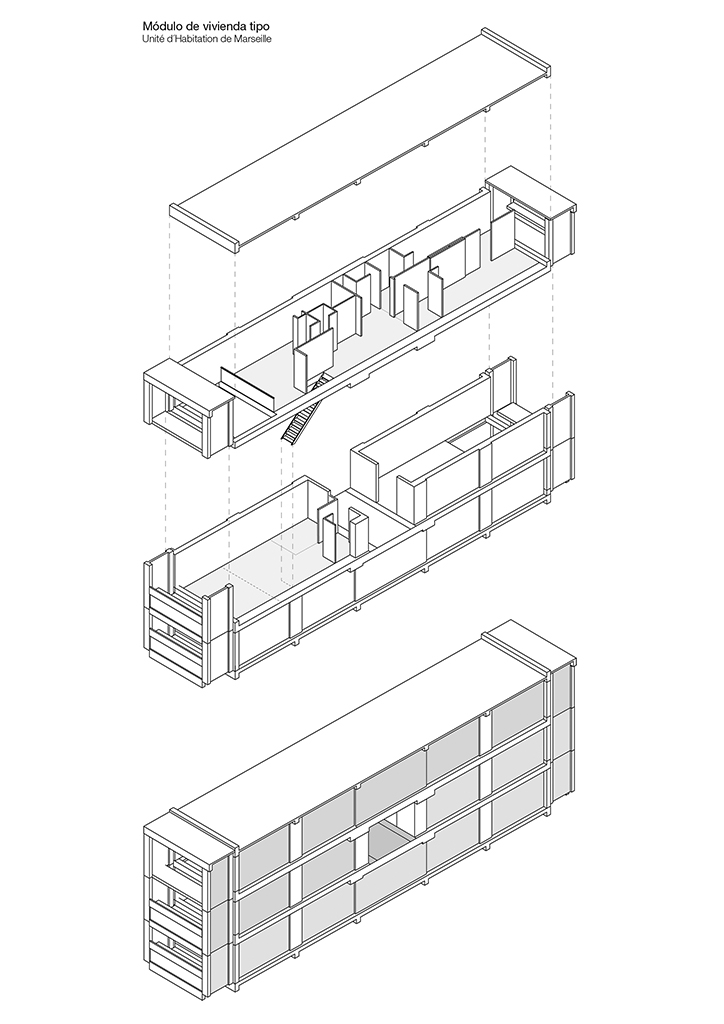
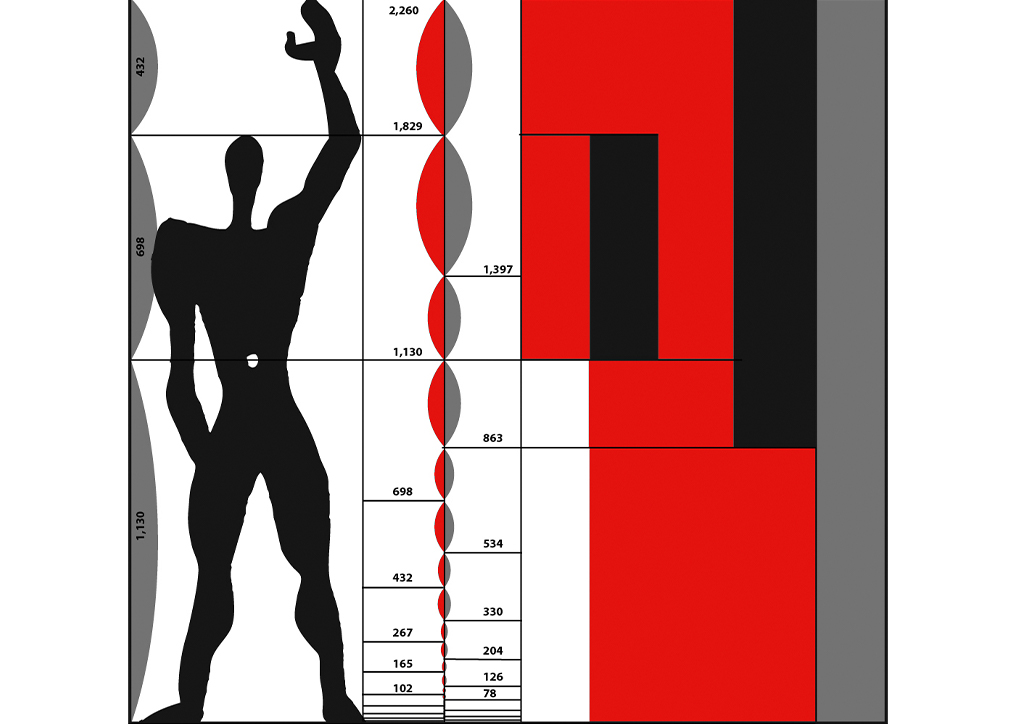
Tools more than rules
These systems bore creations that we still look up to today. The masters numerically defined and crafted beautiful structures. Considering present trends, do classical standards of proportion remain as pertinent as before? As modern architects continue to refine and redefine standards, the need for harmony is unraveled by functionality often dictated by the changing needs community. Beauty, thus, is not defined exclusively by numbers and formulas.
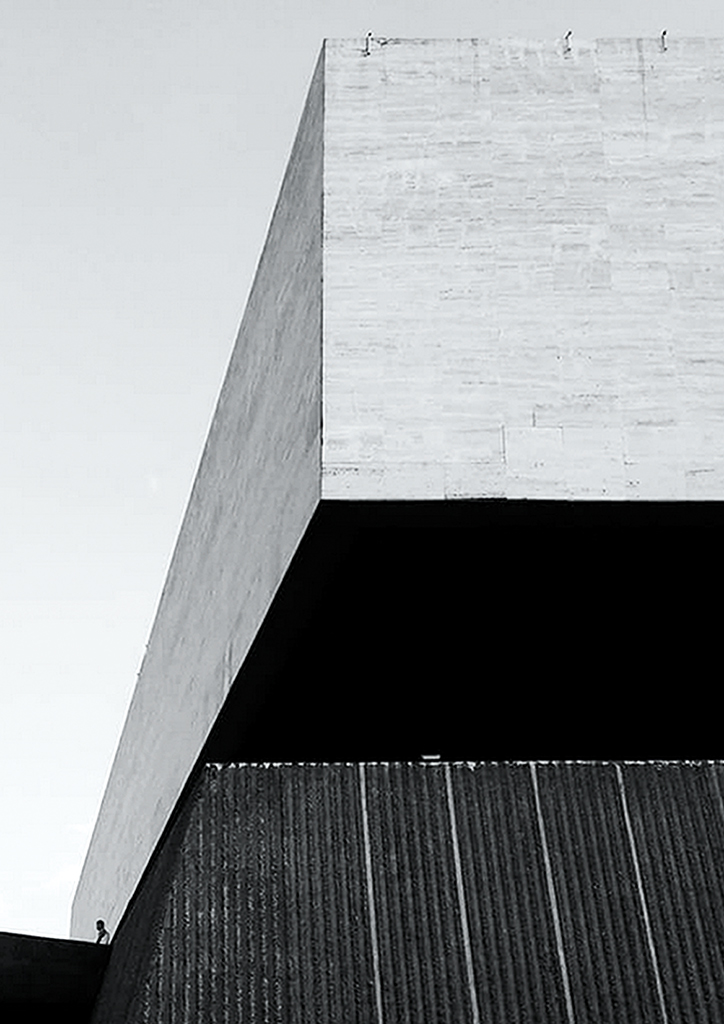
In contemporary architecture, harmony is interpreted in a diversity of styles and techniques. The contemporary experience of beauty, aided by proportion principles or not, depends on the perception of the viewer. After all, architecture cannot be reduced to maintaining the consistent relationship of two lines or spatial relations. Deconstructivism and expressionism value architecture’s capacity to push limits and artistic expression. Emphasis is elevated. Monumentality becomes primary. Consistent patterns take the sidelines. Structural purity and clarity of form dominate.
Nevertheless, we can discipline our present craft by using the golden ratio and other canons as tools to aid the appearance of the façade, the flow of the plans, the comfort of furniture, and the general structure of other design outputs. It is not an automatic utilization of numbers for dimensions but a conscious consideration of proportion in volumes, heights, and compositions–discerning the best instances to apply the rules and opportunities to break them.
The scale we seek today may be different from our ancient counterparts but the challenge is to surpass momentary trends in order to maintain proportion that will remain pleasing tomorrow. Whether or not we let these systems reign over our practices, they lay down one bottom line: proportion will always impact the way users feel within a space and about a structure. And we want to make our homes feel like homes and cities feel like cities, don’t we? Let’s leave the visual tricks and anomalies in the circuses and social media apps where they belong.![]()
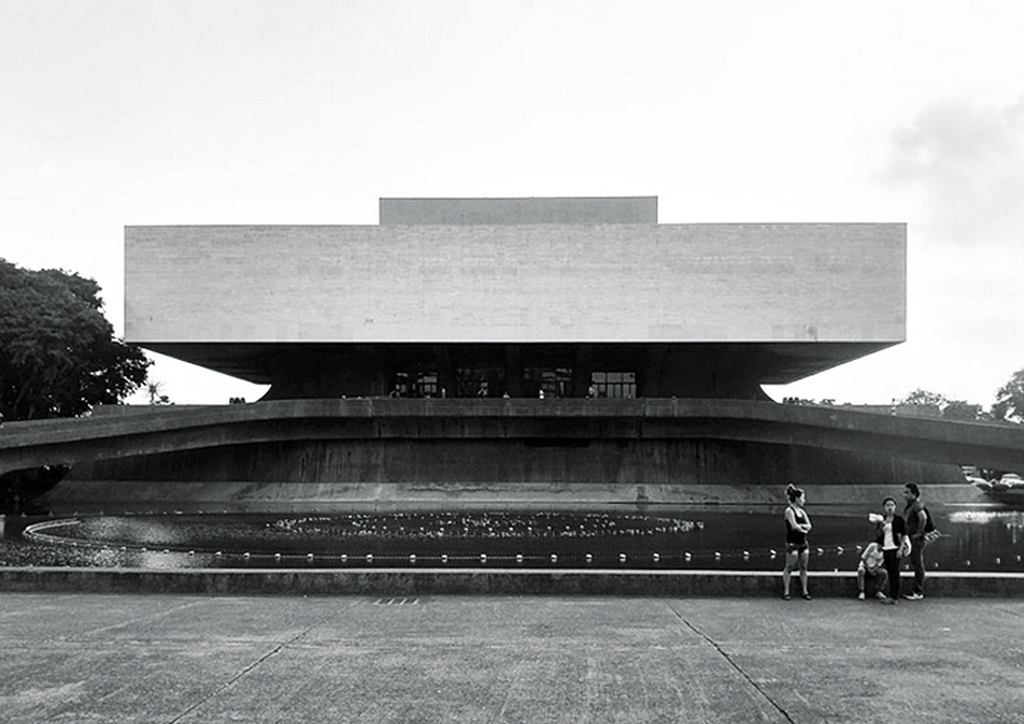
This first appeared in BluPrint Volume 4 2017. Edits were made for BluPrint online.
READ MORE: Forging Modernism: The early years of Leandro Locsin


